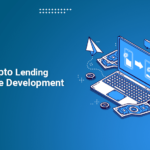
Essential Features of a P2P Crypto Lending Exchange
December 30, 2020
Understanding the Use-cases of a Smart Contract
January 5, 2021As the name suggests, the stablecoins are digital currencies that are price stable. Thus, a stablecoin offers all the advantages of a cryptocurrency but its price is pegged to an asset like physical gold or a fiat currency like USD. It brings the best of the two worlds together. While it provides high security with cryptography, encryption, and hashing, it also provides the stability offered by fiat currencies.
Why did stablecoins become so popular in 2020?
Stablecoins gained tremendous growth in the year 2020. A close look at the market reveals that over 200 stablecoins have been announced to date and the total supply of the stablecoin market has surpassed 12 billion. However, more than 60% of the stablecoin projects are conducting research and development to become fully active. Thus, the stablecoin industry offers a lot to the new entrants to flourish. Here the top 5 reasons for the increasing popularity of stablecoin development:
- Blockchain advantages
As discussed above, a stablecoin is backed by a physical asset or a fiat currency. However, it is based on blockchain. Thus, it inherently provides users with the advantages of blockchain technology like security, transparency, and privacy.
- Remittance advantage
The World Bank estimated that the global remittance market will touch US$746 billion in 2020. This is a 5% growth over the $715 billion global remittance amount in 2019. While the remittance industry continues to grow, the remittance systems are slow and expensive. This is where stablecoins fit in. Built over blockchain, stablecoins support near-instant, more secure, and cheaper cross-border payments.
- In-App integration
Just like fiat gateways, stablecoins can be integrated into e-commerce solutions. Thus, a stablecoin user can make payments easily and quickly even across the borders.
Schedule a Demo for Stablecoin Development
Schedule Free DemoWhat are the different types of stablecoins?
The stablecoin market is flooding with 4 different types of stablecoins.
- Fiat-collateralized stablecoin
As the name suggests, a fiat-collateralized stablecoin is backed by a fiat currency like USD. It is the most popular kind of stablecoin. These can be easily withdrawn to the bank accounts and have higher liquidity in comparison to other types of stablecoins.
However, the main disadvantage is that these are minted and maintained by a centralized body. Along with that, a user needs to undergo KYC for the purchase and redemption.
- Crypto-collateralized stablecoin
These digital currencies are pegged to other cryptocurrencies. However, they can be pegged in different ratios like 1:2 or more. It means that to issue a single token, 2 tokens of the currency (that it is pegged to) will be required.
Crypto-collateralized stablecoins overcome the major disadvantage of fiat-crypto collateralized stablecoins by being completely decentralized. The term over-collateralized is used to refer to such stablecoins.
One major disadvantage of a crypto-collateralized stablecoin is that they are complex. Thus, they are not very popular.
- Un-collateralized stablecoin
Un-collateralized stablecoins are those where no reserve asset is involved. Basically, they use a working mechanism or consensus mechanism to remain stable.
- Commodity-Backed Stablecoin
These stablecoins are backed by assets like gold, real estate, oil, and more. Whenever the value of these underlying assets increases, the value of stablecoin also increases.
Do stablecoins make money?
Unlike altcoins, stablecoins cannot go 10x or 100x. This is because they remain pegged by a fiat currency or a physical asset. However, they do offer revenue earning opportunities to both users and issuers.
How do users earn revenue?
- Earn Interest:
Many projects like Celsius offer enticing interest rates to the stablecoin users who deposit their coins with them in their cryptocurrency interest accounts.
- Margin Funding:
The margin traders are always looking for capital to maximize their trading capital. Many exchanges act as an intermediary and help the stablecoin holders to loan their holdings to the margin traders. The stablecoin holders receive an agreed-upon interest rate from the margin traders.
How do issuers earn revenue?
A centralized stablecoin issuer earns interest by lending the fiat balance sheets to insured third party institutions. Along with that, they also earn by charging fees to customers when they redeem stablecoins for fiat or convert fiat into stablecoins.
Important points for Stable Coin Development
- Liquidity
For any stablecoin to be successful, it must offer multiple trading pairs. This becomes a challenge for a collateralized-cryptocurrency.
- Minting Transparency
When it comes to stablecoin development, most of the stablecoins are minted by a central authority. An issuer needs to maintain transparency in its minting process.
- Peg Stability
A crypto-collateralized stablecoin is pegged to another crypto. Thus, volatility can be higher here.
- Reserve transparency
An issuer must always maintain reserve transparency so that the users can trust the issuance platform.
Why Antier Solutions for stablecoin development?
Antier Solutions is a stablecoin development company driven by a team of experts. Our stablecoin development services span from whitepaper creation to stablecoin development to stablecoin marketing.
Connect with our subject matter experts to strategize your stablecoin development journey.



